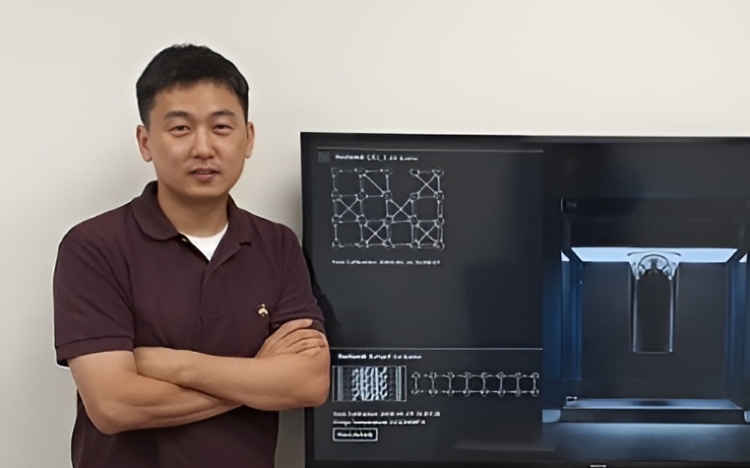
For the first time world, a Korean research team has devised and experimentally validated a “Measurement‐protection (MP)” theory that enables stable quantum key distribution (QKD) without any measurement calibration.
Professor Joonwoo Bae’s team from our School, in collaboration with the Quantum Communications Laboratory at the Electronics and Telecommunications Research Institute (ETRI), has developed a new technology that enables stable quantum communication in moving environments such as satellites, ships, and drones.
Quantum communication is a high-precision technology that transmits information via the quantum states of light, but in wireless, moving environments it has suffered from severe instability due to weather and surrounding environmental changes. In particular, in rapidly changing settings like the sky, sea, or air, reliably delivering quantum states has been extremely challenging.
This research is significant as it overcomes those limitations and opens up possibility of exchanging quantum information stably even while in motion. It is expected that quantum technology can be applied in the future to secure communications between satellites and ground stations, as well as to drone and maritime communications.
Quantum key distribution (QKD) is a technology that uses the principles of quantum mechanics to distribute cryptographic keys that are fundamentally immune to eavesdropping. Existing QKD protocols required repeated recalibration of the receiver’s measurement devices whenever the channel conditions changed.
However, in this work the team proved that, with only simple local operations, stable key distribution is possible regardless of channel conditions. The theory was developed by Professor Bae’s group, and the experiments were carried out by ETRI researchers.

To generate single-photon pulses, the researchers used a 100 MHz light source: a vertical-cavity surface-emitting laser (VCSEL). A VCSEL is a type of semiconductor laser whose beam is emitted vertically from the top surface of the chip.
They emulated a long-distance free-space link with up to 30 dB loss over a 10 m path and inserted various polarization noise to simulate a wireless environment. Even under these harsh conditions, they confirmed that quantum transmission and measurement remained reliable. Both the transmitter and receiver were equipped with three waveplates each to implement the required local operations.
As a result, they demonstrated that an MP-based QKD system can raise the system’s maximum tolerable quantum bit error rate (QBER), the fraction of transmitted qubits received in error, by up to 20.7% compared to conventional approaches.
In other words, if the received QBER is below 20.7%, stable quantum key distribution is possible without any measurement calibration. This establishes the foundation for implementing reliable quantum communication across a variety of noisy channel environments. The team believes this achievement can be applied to scenarios similar to satellite-ground links.
The study was published on June 25 in the IEEE’s prestigious communications journal, “Journal on Selected Areas in Communications”, with ETRI’s Heasin Ko and KAIST’s Spiros Kechrimparis serving as co-first authors.
Professor Bae commented, “This result will be a decisive turning point in bringing reliable quantum-secure communication into practical reality, even under complex environments.”
This research was supported by the Ministry of Science and ICT and the Institute for Information & Communications Technology Planning & Evaluation (IITP) through the “Core Technology Development for Quantum Internet,” “ETRI R&D Support Project,” “Quantum Cryptography Communication Industry Expansion and Next-Generation Technology Development Project,” “Quantum Cryptography Communication Integration and Transmission Technology Advancement Project,” and “SW Computing Industrial Core Technology Development Project”; by the National Research Foundation of Korea through the “Quantum Common-Base Technology Development Project” and “Mid-Career Researcher Program”; and as part of the Future Space Education Center initiative of the Korea Aerospace Agency.